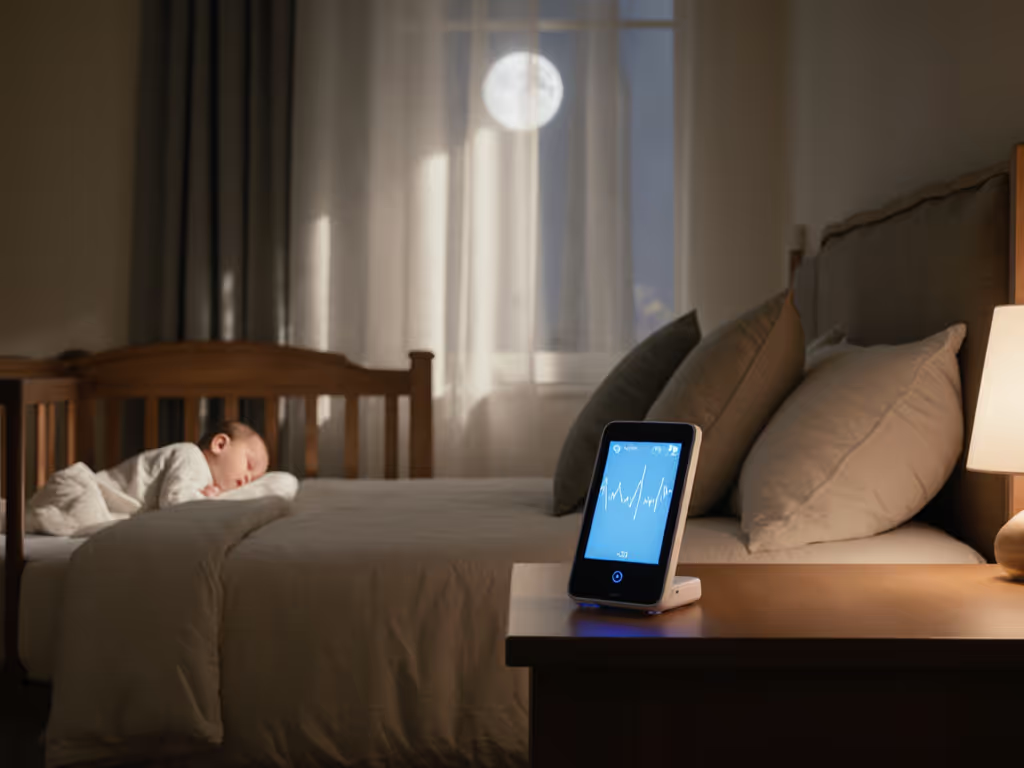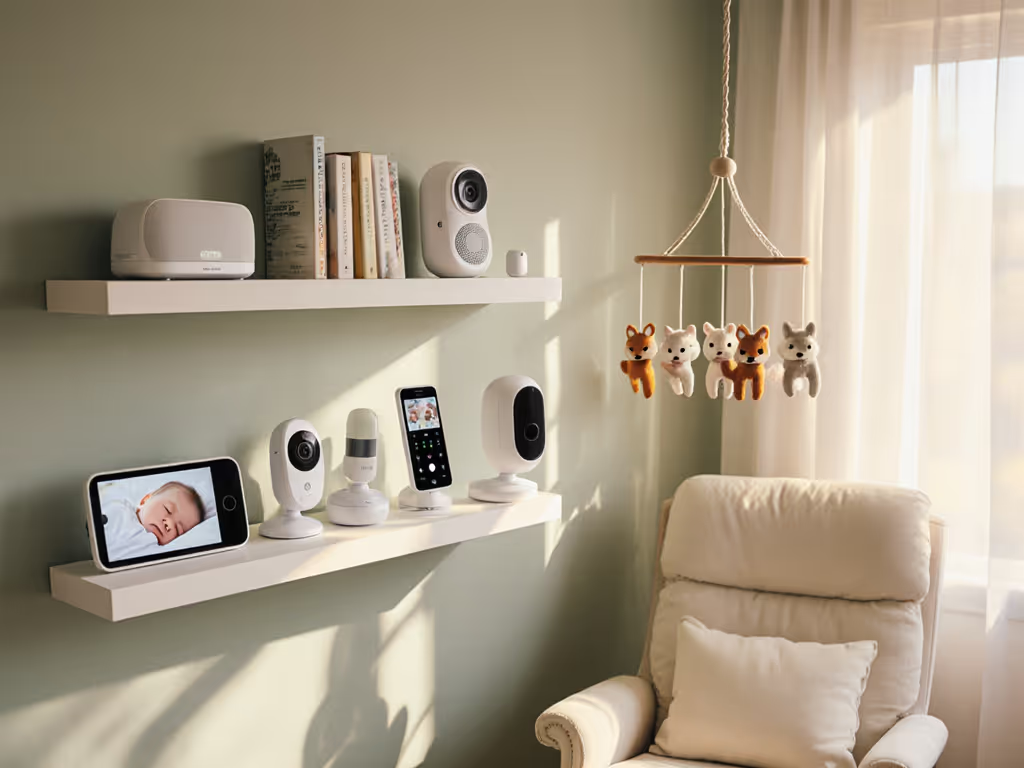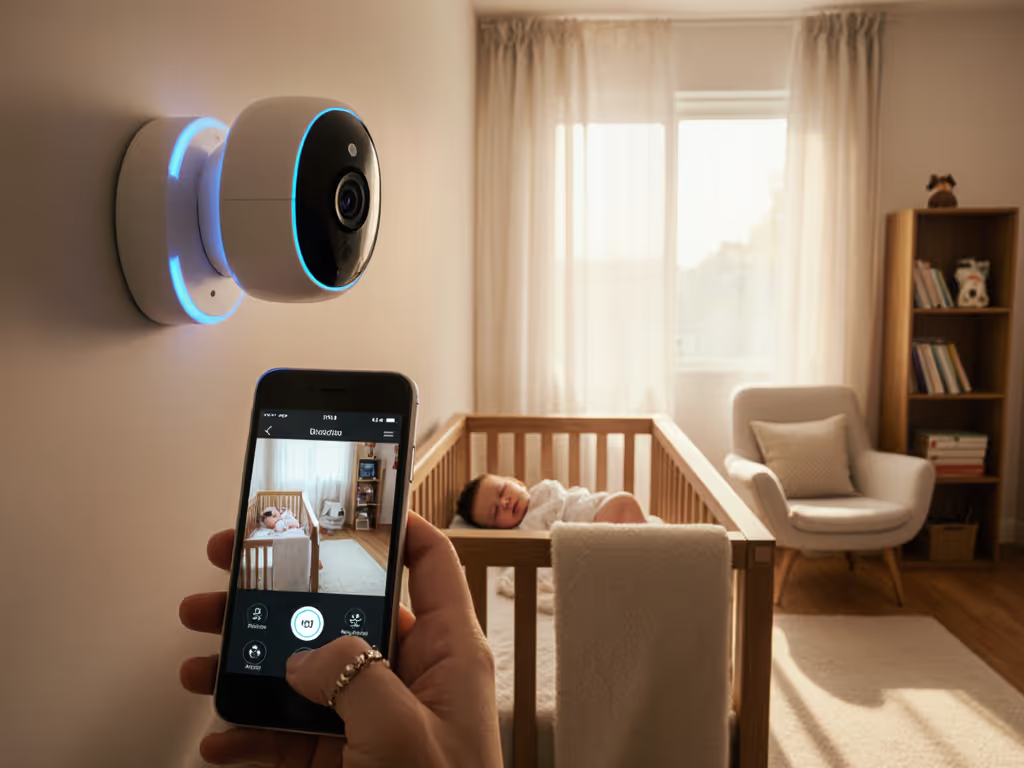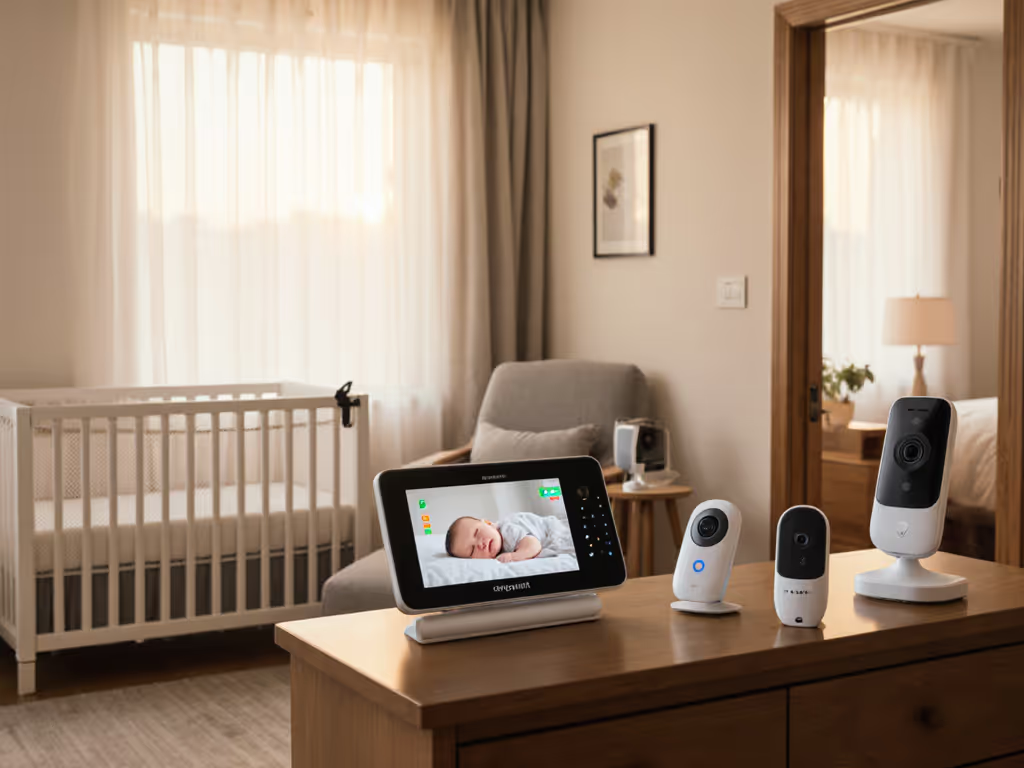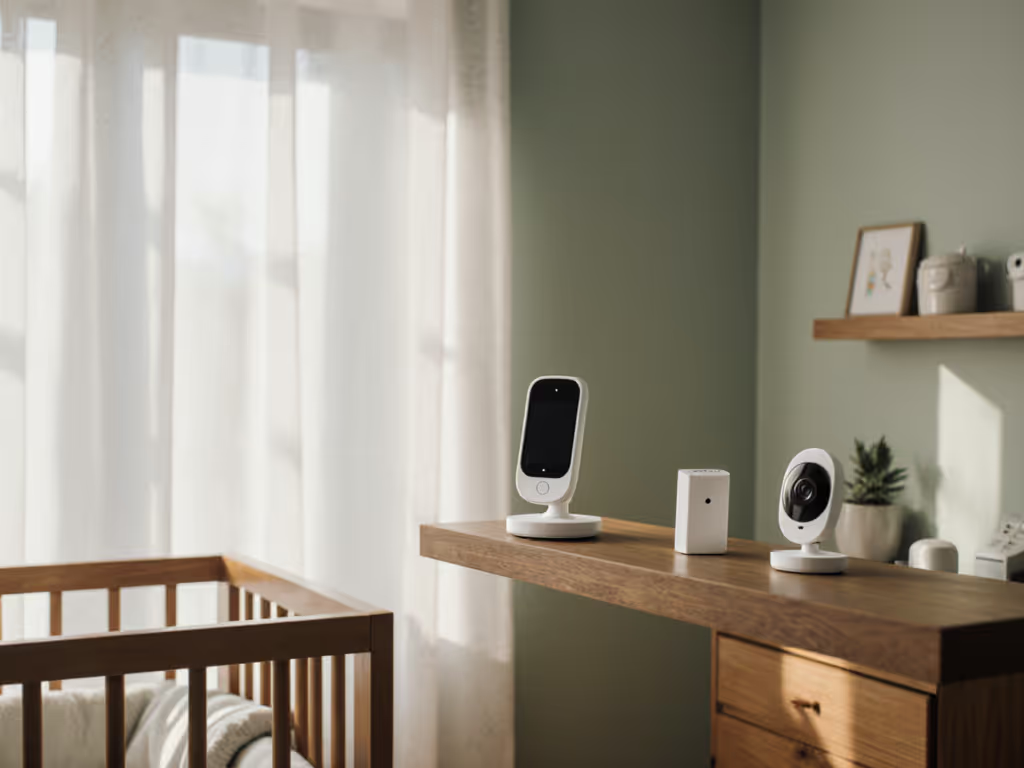
7-Step Baby Monitor Comparison Checklist for Smart Buyers
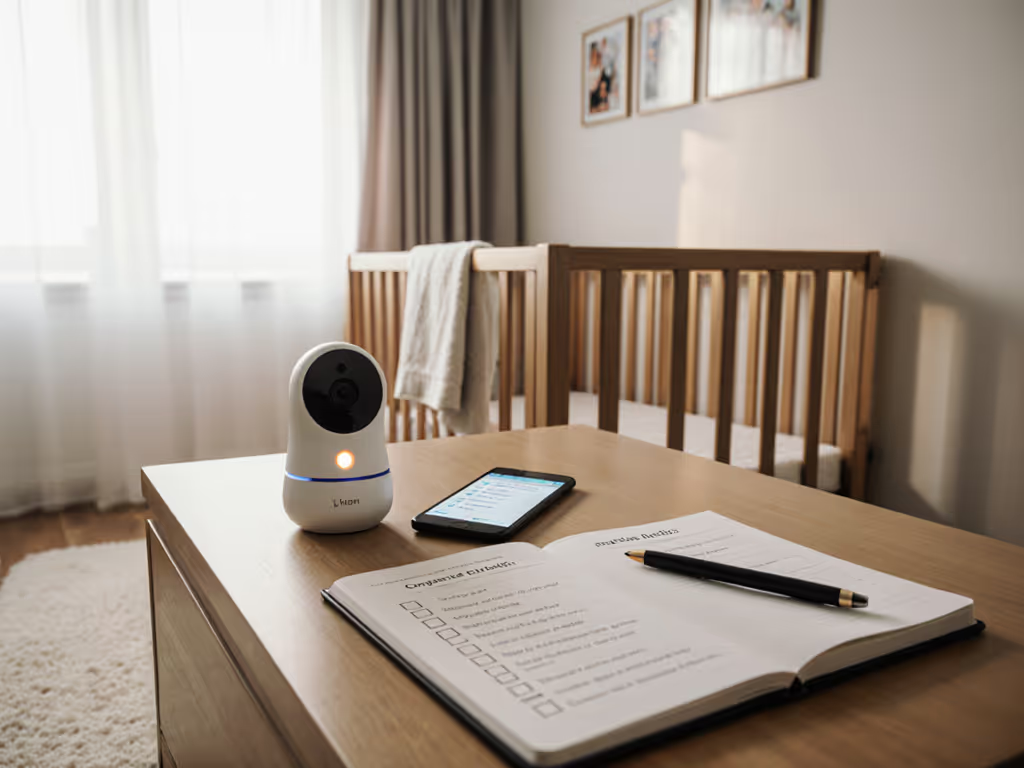
Did you know that a recent survey found over 80 percent of parents worry about their baby’s safety while at home? Choosing the right baby monitor takes more than just picking the latest model. With so many features and potential security risks, understanding which qualities truly matter helps you protect your peace of mind and your child. This guide breaks down essential features like video quality, privacy protection, and user friendliness so you can make informed choices with confidence.
Quick Summary
| Takeaway | Explanation |
|---|---|
| 1. Prioritize video and audio quality | Look for high definition video, at least 720p, and clear audio to monitor your baby effectively. |
| 2. Ensure strong privacy and data security | Choose monitors with data encryption and clear privacy policies to protect your family's information. |
| 3. Compare WiFi and local connectivity | Assess whether WiFi or local monitors fit your home; both have unique advantages regarding security and coverage. |
| 4. Test night vision and zoom capabilities | Check infrared range and zoom features to observe your baby clearly in low light conditions. |
| 5. Assess battery performance and backup options | Opt for monitors with long battery life and multiple charging methods to prevent unexpected shutdowns. |
1. Evaluate Video and Audio Quality Essentials
When choosing a baby monitor, video and audio quality are your first line of defense in keeping a watchful eye on your little one. Think of it like having a reliable security system for your most precious asset.
According to research from Consumer Reports, while even basic monitors can help you see your baby, high definition video provides significantly clearer images. This means you can distinguish details like your baby's breathing patterns or potential movements more accurately. Two way communication features take this a step further by allowing you to not just observe but also interact with your child remotely.
What should you look for? Key video quality indicators include:
- Resolution quality (aim for at least 720p)
- Night vision capabilities
- Wide angle lens coverage
- Zoom functionality
Audio performance matters just as much. Top monitors offer crystal clear sound transmission so you can hear every coo, cry, or subtle noise. The Parental Guide suggests looking for monitors with multiple camera support allowing comprehensive room coverage.
Practical tip: Test the monitor's range before committing. Walk around your home and check signal strength in different rooms. Some monitors work perfectly in compact apartments but struggle in larger homes with multiple walls. Your goal is uninterrupted monitoring that gives you peace of mind without constant signal drops.
2. Consider Privacy and Data Security Features
In an increasingly connected world, your baby monitor is more than just a monitoring device. It is a potential gateway into your home's most intimate spaces. Understanding privacy and data security features becomes critical when selecting a monitor that protects your family's digital safety.
According to the StaySafe.org research, data encryption is the first line of defense for secure baby monitors. End-to-end encryption ensures that video and audio streams remain protected from potential unauthorized access. This means hackers or third party individuals cannot intercept or view your private family moments.
Key privacy considerations include:
- Secure login protocols
- Encrypted data transmission
- Limited cloud storage options
- Clear privacy policy statements
- Regular software security updates
The Common Sense Privacy Program highlights significant concerns about how baby monitor companies handle personal information. Some manufacturers might collect and share data without transparent policies. Your goal is to select a monitor that prioritizes your family's digital privacy.
Practical steps? Always read the privacy policy carefully. Ask manufacturers about their data handling practices. Look for monitors that offer local storage options and allow you to control data sharing settings. A secure baby monitor should feel like a protective shield for your family rather than a potential vulnerability.
Remember: Your child's safety extends beyond physical monitoring to include protecting their digital footprint from the very beginning.
3. Compare WiFi and Local Connectivity Options
When it comes to baby monitors, your connectivity choice can make a world of difference in security and performance. WiFi and local connectivity options each bring unique advantages and potential challenges to your home monitoring setup.
Consumer Reports highlights that WiFi connected monitors provide smartphone convenience but also introduce potential security vulnerabilities. Meanwhile, local monitors using Frequency Hopping Spread Spectrum (FHSS) technology offer enhanced protection by rapidly changing transmission frequencies.
Connectivity pros and cons include:
- WiFi Monitors
- Remote access from anywhere
- Smartphone app integration
- Potential internet security risks
- Local Monitors
- More secure transmission
- No internet dependency
- Limited range of connectivity
StaySafe.org recommends non internet connected monitors as an additional layer of security. These monitors operate on dedicated local frequencies without transmitting data online which significantly reduces hacking risks.
When selecting your monitor consider your specific home environment. Large homes might benefit from WiFi connectivity for broader coverage. Smaller spaces could work perfectly with local frequency monitors. Always prioritize a system that provides clear signals without compromising your family's digital privacy.
Practical advice? Test the monitor's range and stability before fully committing. Walk through your home checking signal strength and potential interference points. Your goal is a reliable connection that keeps you informed and your little one safe.
4. Assess Night Vision and Zoom Capabilities
Night vision and zoom capabilities transform a basic baby monitor into a sophisticated parental surveillance tool. These features give you a crystal clear view of your little one even in the darkest rooms.
According to research in the Computer Science & Information Technology journal, night vision cameras use infrared technology to capture detailed images in low light environments. This means you can observe your baby's sleeping patterns without disturbing their rest by turning on bright lights.
Key night vision and zoom features to consider:
- Infrared range (typically 15-30 feet)
- Image clarity in complete darkness
- Digital zoom levels
- Frame rate during low light conditions
- Automatic light adjustment capabilities
Consumer Reports suggests that zoom capabilities allow parents to examine specific details like your baby's breathing or position. This can be crucial for peace of mind and early detection of potential issues.
Practical tip: When testing a monitor, simulate nighttime conditions. Check how well the camera performs in different lighting scenarios. Some monitors offer multiple zoom levels allowing you to pan and focus on different areas of the crib.
Remember that not all night vision technologies are created equal. A high quality infrared camera will provide clear images without grainy or blurry results. Your goal is a monitor that gives you a sharp view of your baby anytime day or night.
5. Check Battery Life and Power Backup
A baby monitor's battery performance can make or break your monitoring experience. Imagine being in the middle of an important task only to have your monitor suddenly die just when you need it most.
Research from Kid Travel reveals that battery life varies significantly between monitors. Some high performance models like the VTech Video Baby Monitor can provide an impressive 19.5 hours of continuous video monitoring. However battery longevity is not just about initial performance but sustained reliability over time.
Important battery considerations include:
- Total continuous monitoring hours
- Charging time requirements
- Battery performance degradation
- Power backup options
- Charging port accessibility
Kid Travel's testing highlights a critical insight many parents overlook battery deterioration. Monitors can experience significant performance drops after multiple charging cycles. This means the monitor that worked perfectly on day one might struggle to maintain consistent power after several months of use.
Practical advice? Always have a backup charging method. Consider monitors with multiple power options like USB charging or wall plugs. Test the monitor's battery performance before relying on it completely. Some parents keep a spare battery or backup monitor as an emergency solution.
Your goal is a reliable monitoring system that keeps working when you need it most. A monitor with robust battery performance gives you peace of mind knowing you will always stay connected to your little one.
6. Review Noise and Movement Alert Functions
In the world of baby monitoring, staying informed about your child's smallest movements and sounds can provide incredible peace of mind. Noise and movement alert functions transform your monitor from a simple viewing device into an intelligent safety system.
Consumer Reports emphasizes that sound light indicators are game changing features that allow parents to monitor their baby's environment even when audio is muted. These visual indicators create a multilayered monitoring approach that keeps you connected.
Advanced alert functions to consider:
- Sound level light indicators
- Vibration alerts
- Sensitivity adjustable settings
- Multiple notification channels
- Movement tracking technology
Modern baby monitors go beyond basic audio transmission. They now provide sophisticated tracking that can detect irregular breathing patterns or unexpected movements. This means you can quickly respond to potential issues before they become emergencies.
Practical advice? Test the monitor's alert sensitivity before relying on it completely. Some monitors allow you to customize alert thresholds preventing unnecessary notifications while ensuring you catch genuinely important events. Look for systems that offer nuanced tracking without creating false alarms.
Your goal is a monitoring system that keeps you informed without overwhelming you with constant notifications. The right noise and movement alerts will feel like an extra set of eyes watching over your little one.
7. Examine Setup, App Usability, and Support
Technology should simplify parenting not complicate it. A baby monitor with an intuitive setup and user friendly app can be the difference between stress and seamless monitoring.
Consumer Reports emphasizes that app usability is a critical factor in selecting a baby monitor. A complicated interface can turn what should be a helpful tool into a frustrating experience. Modern parents need systems that integrate smoothly into their busy lives.
Key setup and app considerations include:
- Initial device configuration time
- Number of steps required for installation
- Smartphone compatibility
- User interface design
- Technical support availability
- Firmware update processes
- Cross platform functionality
When evaluating a baby monitor system consider the entire user experience. How quickly can you go from unboxing to monitoring? Are the instructions clear? Can multiple family members access the system easily?
Practical advice? Before purchasing read online user reviews focusing on real world setup experiences. Some monitors require complex wifi configurations while others offer straightforward plug and play options. Look for systems with responsive customer support and clear tutorial resources.
Your ultimate goal is a monitoring solution that feels like a helpful partner in your parenting journey. A well designed system will provide peace of mind without adding technological complexity to your already busy life.
Below is a comprehensive table summarizing the key considerations and features for selecting a baby monitor as discussed throughout the article.
| Factor | Key Considerations | Benefits/Outcomes |
|---|---|---|
| Video & Audio Quality | Resolution (720p+), Night Vision, Two-way Communication | Clearer images & sound, enhanced interaction |
| Privacy & Security | Data encryption, Secure login, Encrypted data | Protects family’s digital safety |
| Connectivity Options | WiFi for remote access, Local for security | Convenience or enhanced data protection |
| Night Vision & Zoom | Infrared range, Zoom levels, Image clarity | Crystal clear viewing even in dark rooms |
| Battery Life | Continuous hours, Charging time, Backup options | Reliable monitoring with fewer interruptions |
| Alerts & Notifications | Sound indicators, Vibration alerts, Adjustable settings | Multilayered monitoring without false alarms |
| Setup & App Usability | Configuration time, User interface, Support | Stress-free integration with clear guidance |
Find the Perfect Baby Monitor That Matches Your Needs
Choosing the right baby monitor is more than just picking the latest gadget. As highlighted in the "7-Step Baby Monitor Comparison Checklist for Smart Buyers," key challenges include ensuring excellent video and audio quality, protecting your family's privacy through secure connections, and finding a system with reliable night vision and alert features that work seamlessly in your home environment. If you have felt overwhelmed trying to balance WiFi versus local connectivity or worried about battery life during those crucial moments, you are not alone.
At Baby Monitors for Parents, we understand these concerns deeply. Our expert guides and detailed reviews of leading monitors like the Miku Pro 2 and Nanit Pro focus on practical, privacy-focused advice so you can feel confident about your choice. Discover how to evaluate features like encrypted data transmission, zoom capabilities, and app usability to create a monitoring setup that truly protects and supports your family. Don't wait until uncertainty compromises your peace of mind. Start exploring our comprehensive resources now at https://babymonitorsforparents.pro and make an informed decision that keeps your baby safe.
Ready to take the next step Explore our in-depth buying guides and find the baby monitor that fits your unique lifestyle and security needs today.
Frequently Asked Questions
How do I evaluate the video and audio quality of a baby monitor?
To evaluate video and audio quality, look for key indicators like resolution (at least 720p), night vision capabilities, and two-way communication features. Test the monitor's range in different rooms of your home to ensure you have uninterrupted coverage.
What privacy features should I consider when selecting a baby monitor?
Focus on monitors that offer data encryption, secure login protocols, and clear privacy policy statements. Always read the privacy policy before purchasing and ask manufacturers about their data handling practices to protect your family's digital safety.
What are the key differences between WiFi and local connectivity options for baby monitors?
WiFi connected monitors offer smartphone convenience but come with potential security risks, while local monitors using Frequency Hopping Spread Spectrum (FHSS) provide more secure transmission without internet dependency. Assess your home environment to choose the right connectivity option for optimal performance.
How can I assess the night vision and zoom capabilities of a baby monitor?
Examine features like infrared range and image clarity in low light conditions for night vision, as well as digital zoom levels to check detail visibility. Test the monitor in simulated nighttime scenarios to ensure it meets your expectations.
What factors should I consider regarding battery life and power backup?
Look for monitors that offer long continuous monitoring hours and evaluate how quickly they charge. Consider options with backup power methods like USB charging or multiple charging ports to ensure reliable performance during extended use.
How do I ensure the setup and app usability of a baby monitor is straightforward?
Evaluate the initial configuration time, the number of steps required for installation, and the user interface design. Read user reviews focused on setup experiences to find systems that are easy to use from the start.

